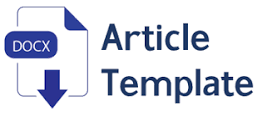Analisis Bibliometrik untuk Implementasi Enterprise Resource Planning (ERP)
Keywords:
Enterprise Resource Planning (ERP)Abstract
Penelitian ini menyajikan sebuah penelitian analisis bibliometrik tentang enterprise resource planning (ERP) pada UMKM. Penelitian ini bertujuan untuk menganalisis bagaimana implementasi ERP dalam mengelola transaksi dan perencanaan bisnis terintegrasi secara real time untuk menghasilkan strategi pemasaran yang berdampak pada peningkatan hasil usaha. enterprise resource planning (ERP) merupakan sistem berbasis komputer yang dirancang untuk memproses manajemen transaksi dan perencanaan bisnis yang dikelola karena memiliki banyak keunggulan seperti akses informasi, efisiensi dan otomasi pengendalian sistem. Penelitian ini menganalisis artikel yang diterbitkan dari database Google Scholar menggunakan software publish or perish (PoP) dalam rentang waktu 2015-2020 dan diklasifikasikan berdasarkan topik yaitu implementasi enterprise resource planning (ERP). Hasil analisis bibliometrik dapat digunakan untuk mengetahui implementasi enterprise resource planning (ERP), teknik yang digunakan untuk implementasi enterprise resource planning (ERP) dan cara menganalisis hasil dari implementasi enterprise resource planning (ERP)
References
Ellegaard, O., & Wallin, J. A. (2015). The bibliometric analysis of scholarly production: How great is the impact? Scientometrics, 105(3), 1809–1831. https://doi.org/10.1007/s11192-015-1645-z
Fahimnia, B., Sarkis, J., & Davarzani, H. (2015). Green supply chain management: A review and bibliometric analysis. International Journal of Production Economics, 162, 101–114. https://doi.org/10.1016/j.ijpe.2015.01.003
Jayawickrama, U., Liu, S., Hudson Smith, M., Akhtar, P., & Al Bashir, M. (2019). Knowledge retention in ERP implementations: the context of UK SMEs. Production Planning and Control, 30(10–12), 1032–1047. https://doi.org/10.1080/09537287.2019.1582107
Khaleel, Y., Abuhamdah, A., Sara, M. A., & Al-Tamimi, B. (2016). Components and analysis method of enterprise resource planning requirements in small and medium enterprises. International Journal of Electrical and Computer Engineering, 6(2), 682–689. https://doi.org/10.11591/ijece.v6i2.8372
Khan, M. Y., Sabeel Rahman, M. K., Vishwa Mithra, V., & Sai Nikarika, S. (2015). Enterprise Resource Planning (ERP) in security and planning system. Biosciences Biotechnology Research Asia, 12(2), 391–393. https://doi.org/10.13005/bbra/2215
Leu, J.-D., & Lee, L. J.-H. (2016). Enterprise resource planning (ERP) implementation using the value engineering methodology and Six Sigma tools. In Enterprise Information Systems (Vol. 11, Issue 8, pp. 1243–1261). Informa UK Limited. https://doi.org/10.1080/17517575.2016.1215537
Rachita Rake. (2020). ERP Software Market by Component, Deployment Model, Business Function, Industry Vertical, and End User: Opportunity Analysis and Industry Forecast, 2019-2026. Allied Market Research. https://www.alliedmarketresearch.com/press-release/global-ERP-software-market-is-expected-to-reach-41-69-billion-by-2020.html
Reuters, T. (2008). Using Bibliometrics: A guide to evaluating research performance with citation data. Thomson Reuters, 12.
Rosenkrantz, A. B., Chung, R., & Duszak, R. (2019). Uncited Research Articles in Popular United States General Radiology Journals. In Academic Radiology (Vol. 26, Issue 2). Elsevier Inc. https://doi.org/10.1016/j.acra.2018.04.011
Ruivo, P., Oliveira, T., & Neto, M. (2015). Using resource-based view theory to assess the value of ERP commercial-packages in SMEs. Computers in Industry, 73, 105–116. https://doi.org/10.1016/j.compind.2015.06.001
Tanudjaja, I., & Kow, G. Y. (2018). Exploring Bibliometric Mapping in NUS using BibExcel and VOSviewer. IFLA WLIC Kuala Lumpur, 1–9. http://library.ifla.org/2190/1/163-tanudjaja-en.pdf
Xu, Y., Rahmati, N., & Lee, V. C. S. (2008). A review of literature on Enterprise Resource Planning systems. 2008 International Conference on Service Systems and Service Management, 1–6. https://doi.org/10.1109/ICSSSM.2008.4598481







